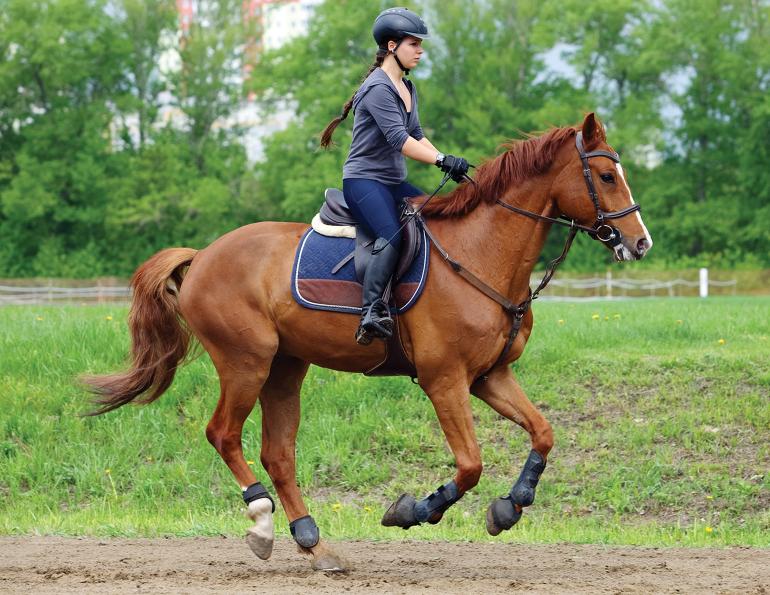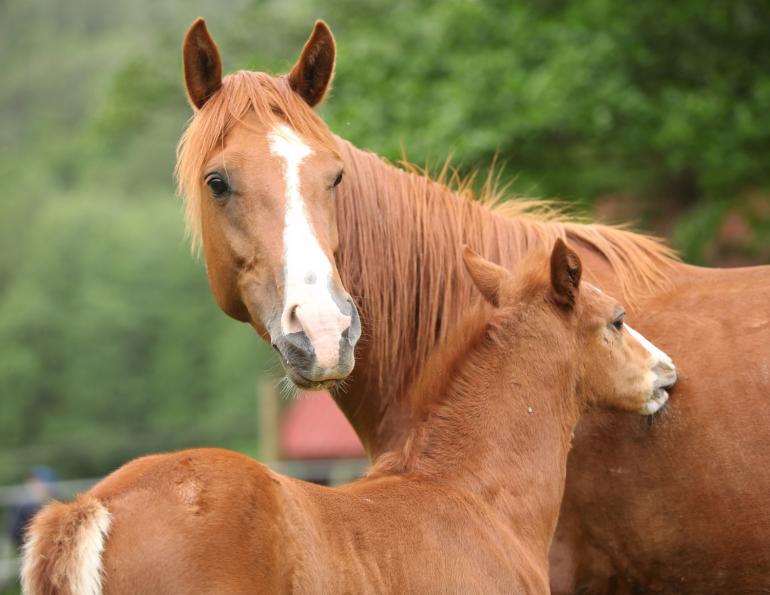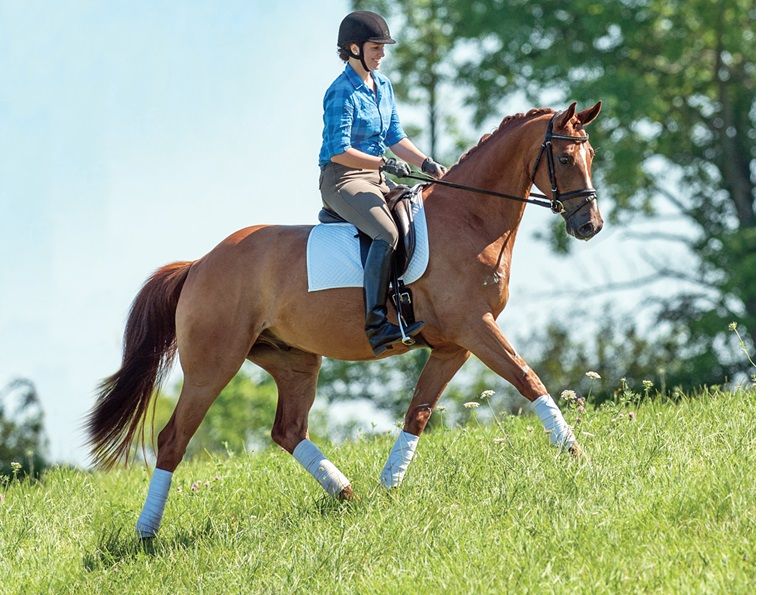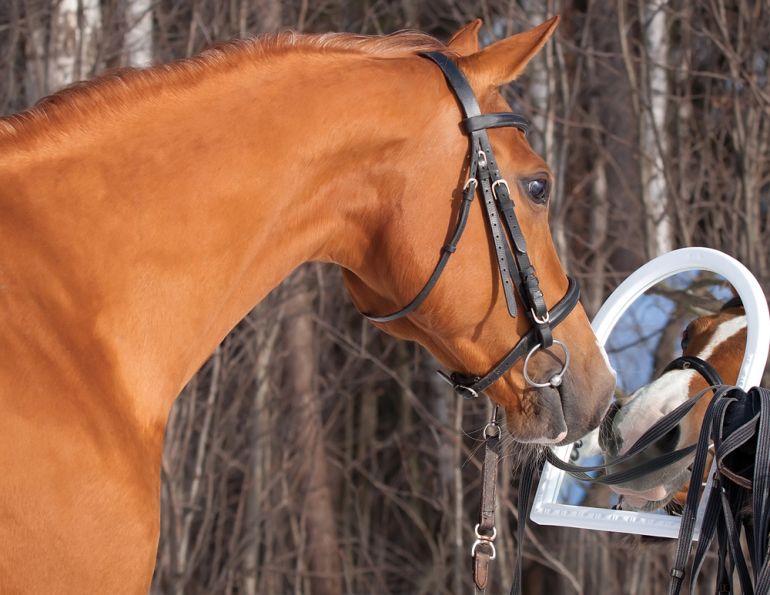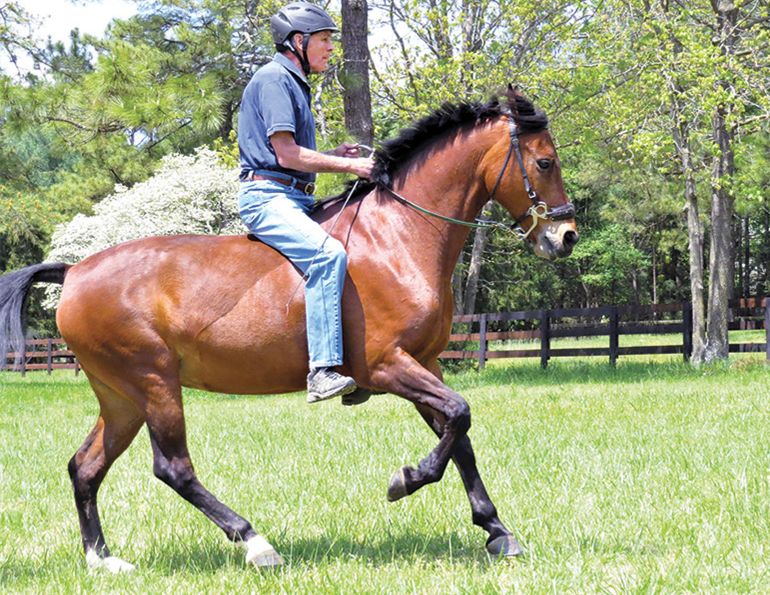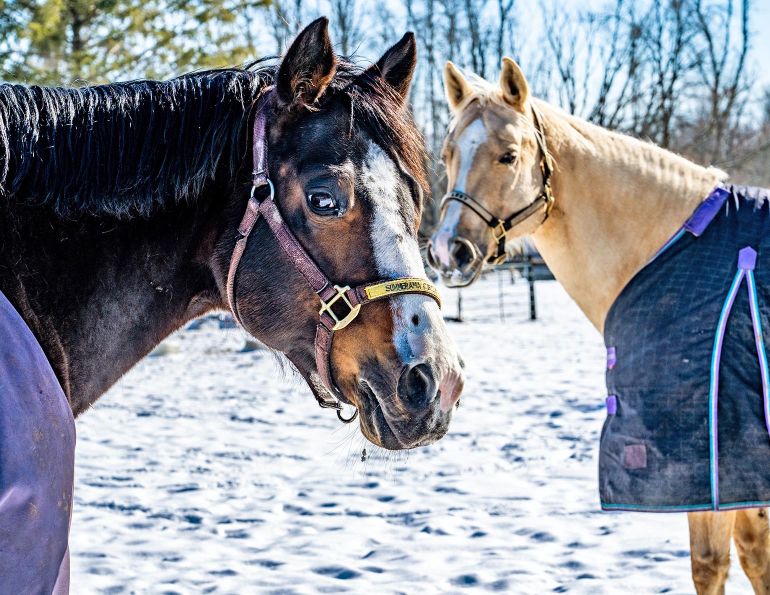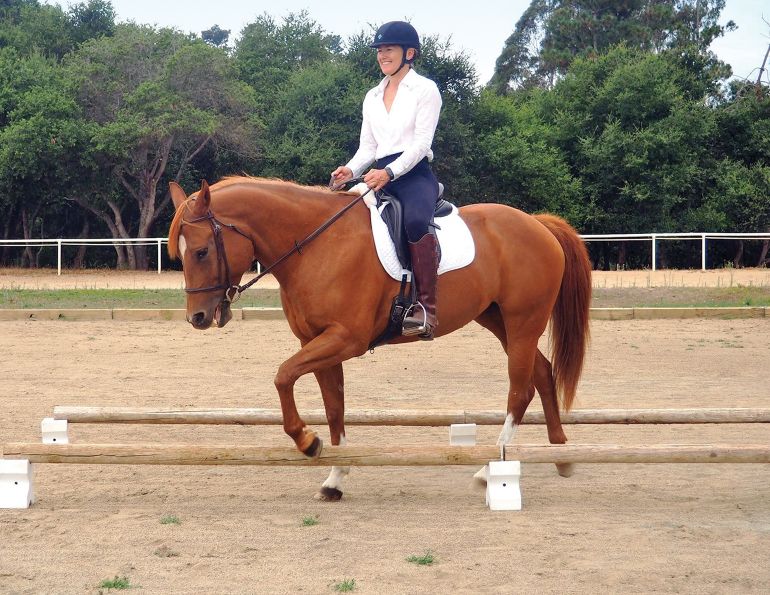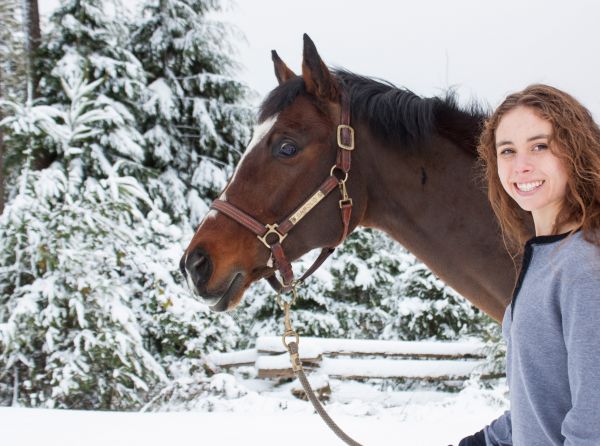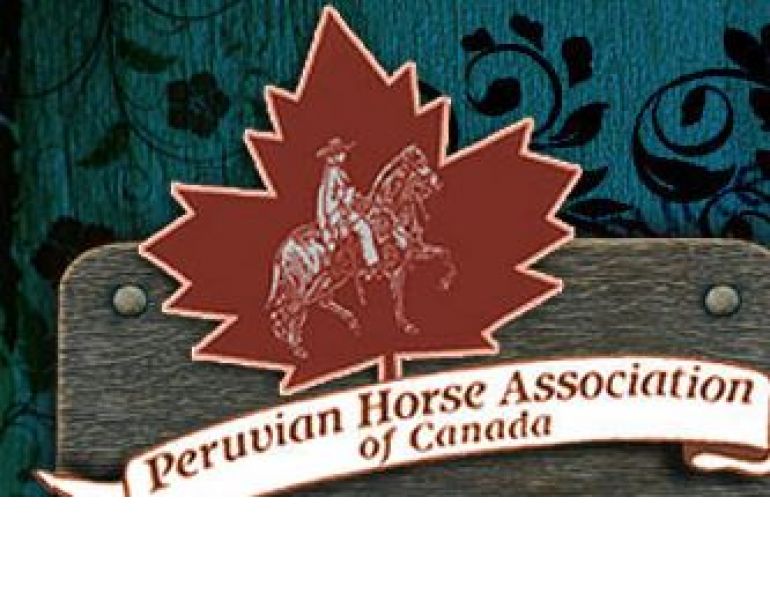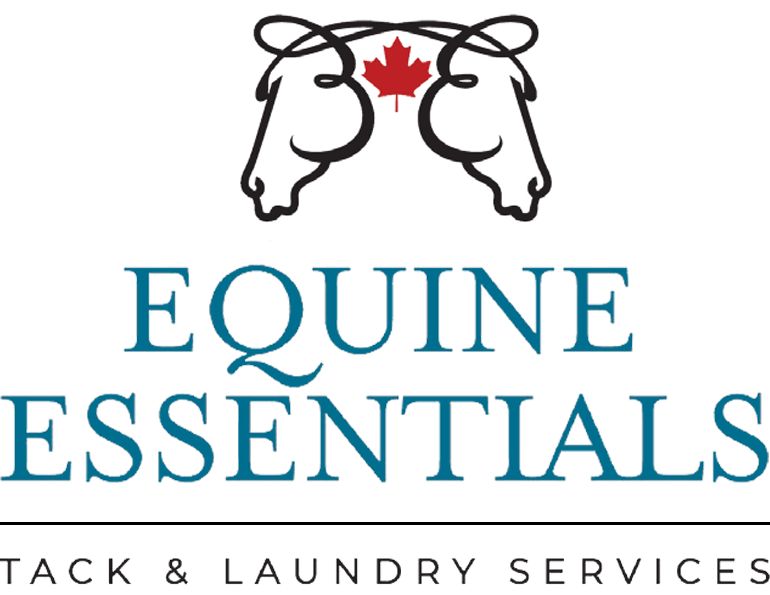By Jec A. Ballou
While it might often be spoken about in artistic, aesthetic, or even philosophical ways, lightness — both of movement and also of communication with horses — is more than an abstract ideal. In many ways, it measures a horse’s current physiological capabilities.
Can the horse’s small stabilizing muscles perform their role while the locomotive ones perform theirs? Is his nervous system capable of creating fine-tuned movements? Is the horse in a state of calm and curious readiness, indicating activation of his critical parasympathetic nervous system? In order for a horse to move with ease and gracefulness, it is imperative that he responds to the lightest possible cues from his rider or handler.
Performing movements and exercises from subtle stimuli ensures that the horse’s highly innervated postural and stabilizing muscles, which govern fine motor control, are awake and firing. On the other hand, rigid, delayed, or tense movements indicate an over-use of poorly innervated locomotive muscles. And the more often these big muscles take over, the more habituated they become. Without good nerve activation, muscular function suffers.

The horse must respond to the lightest possible cues from his rider in order to move fluidly and with ease. Photo: Clix Photography
Nerves communicate with the brain and muscles through intermittent impulses. Strong or constant pressure on them results in switching off. An example of this: when a rider clamps her legs around the horse’s ribcage or bangs heavily on his sides, the effect is numbing. Nerve signals are interrupted, dulled, and eventually switch off. The postural muscles they control are also switched off.
Related: The Quality of the Contact
Any time a horse’s posture or quality of movement needs improvement, the rider and handler must start with developing a communication of lightness. If the horse responds with dullness, muscular bracing, or tension there will be no progress.
Here’s a recent example from my own riding: My gelding, Diamante, was cantering along with what I consider poor movement — heavily weighted on the front end, rushing, jarring me around in the saddle. He was “muscling” himself forward every stride as opposed to moving with ease and efficiency. I wanted to invite him to canter along by means of a series of well-coordinated nerve impulses rather than brute force.
I needed him to quit overusing his big shoulder muscles, which were creating the problem, and instead rebalance his centre of gravity by firing up the postural muscles. Using my seat, I asked him to slow down and rebalance himself. He was distracted and did not immediately respond. In fact, his movement deteriorated and became even more jarring to ride. I was tempted to keep applying my cue, perhaps even stronger. But I knew that doing so would lead to him deadening against the request from my seat, in which case there would be no hope of stimulating the nerves that would lead to an easier, more refined, and pleasant ride.
In this instance, I transitioned downward to a walk for a few steps, asked Diamante to leg-yield away from my inside leg, and then departed to canter again. I repeated this sequence several times quickly, which caused him to listen and respond to my signals more closely, and in turn meant I could use increasingly gentler and lighter cues. The result: through responding to this lightness, Diamante activated the nerves that fired up the right muscles for ease of movement while lessening tension from the wrong ones.
The following are useful everyday exercises to test and maintain lightness, both the lightness of your communication and also your horse’s response. These will give you ideas for other routines that are simple to perform but will keep your horse in a good physiological state. They are particularly useful because they require specific small movements, which call into play the muscles involved in lightness.
Related: Routines for a Balanced, Engaged Horse
Windshield Wiper
This exercise asks your horse to perform turns on the forehand within the boundaries of two ground poles. The motion of his body should appear like a windshield wiper gliding back and forth, hence the name. This requires body control and careful limb placement in order to not knock around the poles. If an immediate and smooth response is not achieved, several mistakes occur — the horse backs up or staggers outside the poles, or raises his neck and barges forward. Take your time and always return to a calm quiet standstill as needed. Do not rush as this most often adds tension to braced muscles. This can be performed from the ground or under saddle.
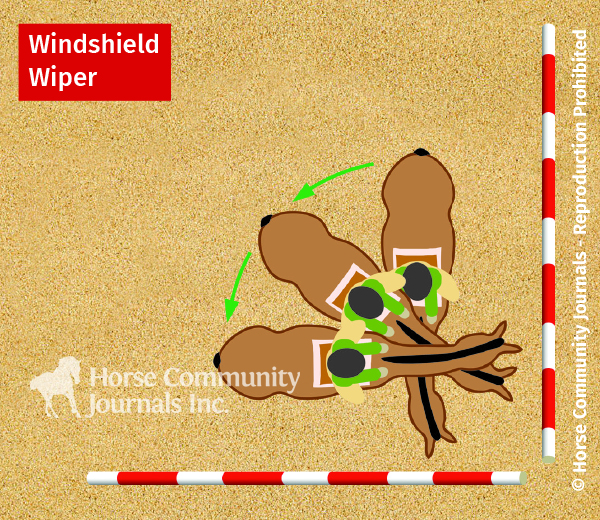
- Set up two ground poles in an L shape.
- Walk your horse inside the L parallel to one of the poles.
- Ask him or her to stand with the front feet in the corner of the L. Stand quiet and straight.
- Now ask for a turn on the forehand…
- …swinging his hindquarters sideways until they are close and parallel to the opposite pole.
- Be sure the front feet remain in the corner of the L.
- Now return to your starting position. Keep repeating this sequence.
Lateral Poll Flexion
Achieving looseness in the horse’s poll muscles contributes to a body-wide lightness of movement by encouraging topline and bottom-line muscle chains to relax. You will ask the horse for tiny movements with his or her head, and be sure to keep your fingers and wrists relaxed and supple. It is quite common for horses to feel more rigid or tight on one side versus the other. Do not force the horse to move past a comfortable range of motion.

Courtesy of Jec A. Ballou
- Place one hand on the bridge of the horse’s nose and the other gently on the side of his face. (photo)
- Now carefully swivel his or her head towards you.
- Then gently swivel it back the other direction.
- Imagine rotating his head side to side as if it were attached by a hinge to the neck.
- Repeat a half dozen times.
Schaukel
Think about a smooth continuous flow of energy backwards and forwards. Aim to keep the horse’s neck parallel with the ground, not higher, and pause briefly (five seconds) if the horse braces and lifts its neck. Imagine the horse’s body as a marble rolling back and forth in a groove, holding a straight trajectory as it rolls smoothly forward and back, forward and back. This can be performed from the ground or under saddle. To keep the horse aligned straight, it can be helpful to practice alongside a fence, wall, or pole.
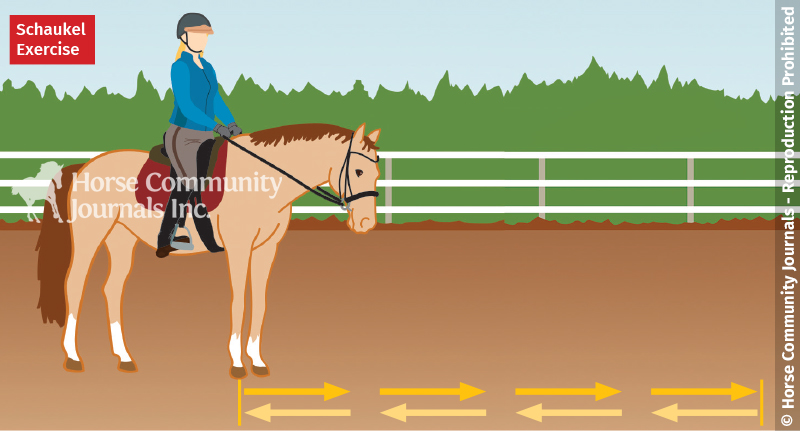
- From a square and immobile halt, ask the horse to back up four steps.
- After the final backwards step, walk immediately forward four steps. Do not pause between the backward and forward motions.
- Repeat this sequence six to eight times
Related: Ride Forward, Not Fast
Related: Horsemanship - Are You Riding All Your Gears?
Main Photo: Shutterstock/Horsemen



